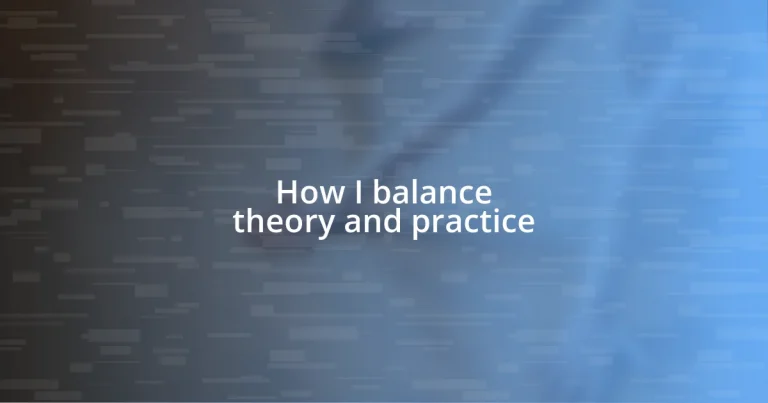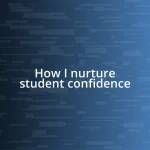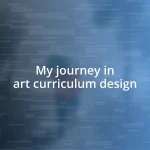Key takeaways:
- The theory-practice gap highlights the challenges of applying educational theories in real classroom settings, necessitating adaptability and open dialogue with students.
- Identifying personal learning styles is essential for effective teaching, allowing for the integration of diverse methods that cater to visual, auditory, and kinesthetic learners.
- Continuous reflection on teaching experiences leads to growth and improvement, emphasizing the importance of integrating theoretical knowledge with practical applications and student engagement.
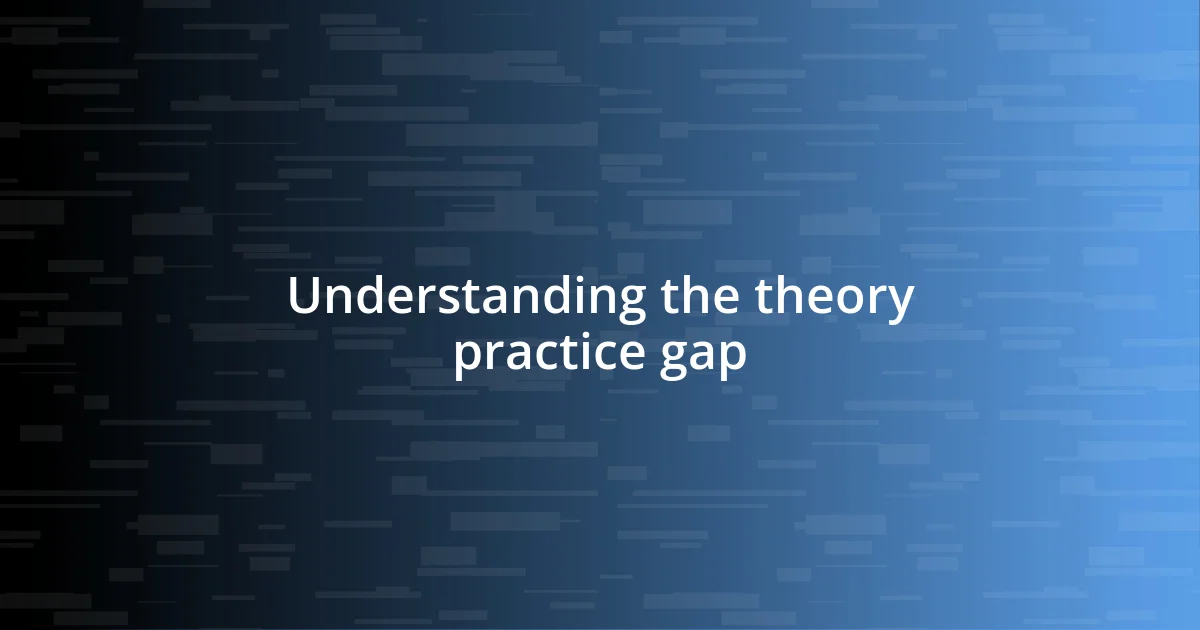
Understanding the theory practice gap
The theory-practice gap is a fascinating yet frustrating concept that I’ve encountered repeatedly in my journey. I remember when I first delved into educational theories; they seemed so clear-cut on paper, almost like a roadmap. But when it came time to apply these theories in real classrooms, I often felt lost, wondering why things didn’t align as neatly as the textbooks suggested. Have you ever felt that disconnect?
One particularly challenging moment for me was while implementing a constructivist approach, which emphasizes learning through experience. I had grand plans to engage my students in hands-on projects, but I quickly realized that their varied backgrounds made it difficult to connect the theory with what they were experiencing. I was left asking myself, what am I missing here? It was a humbling reminder that theory is often an idealized version of reality.
Understanding the gap between theory and practice requires more than just a grasp of the concepts. It demands a willingness to adapt, reflect, and sometimes even let go of what we’ve learned to embrace the unpredictable nature of real-life situations. I’ve found that through open dialogue with peers and staying curious about my students’ responses, I can bridge that gap. Engaging with the theory while tuning into the practical aspects enriches my approach and enhances my teaching experience.
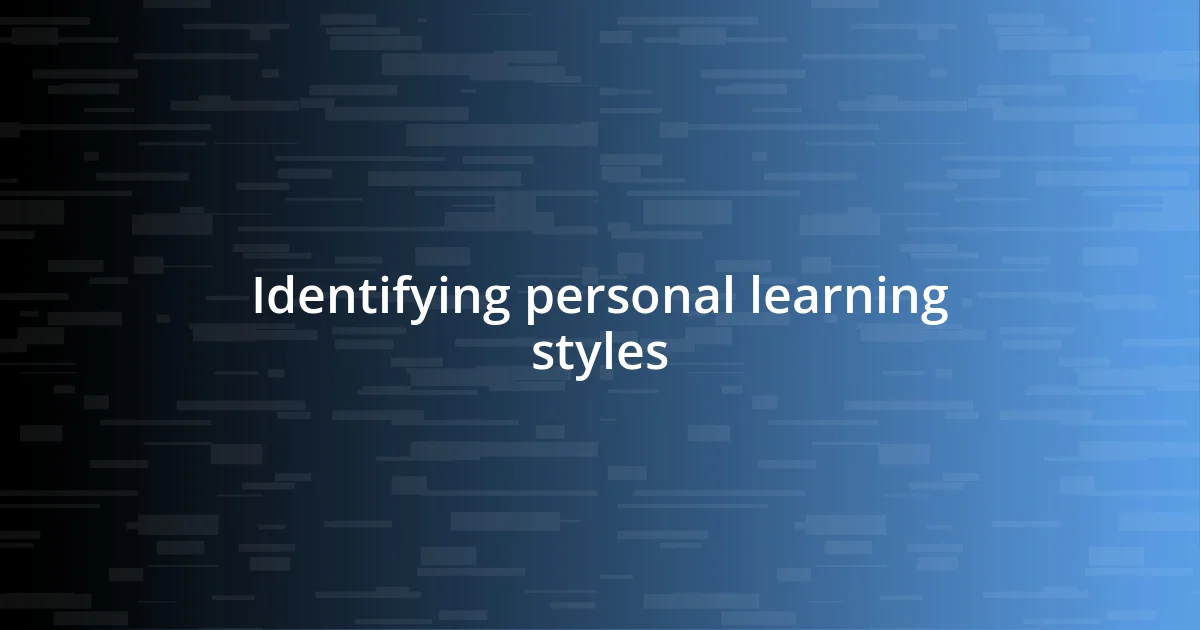
Identifying personal learning styles
Identifying personal learning styles is a crucial step in tailoring your educational approach, both for yourself and your students. I vividly remember a time when I took a learning style assessment, and it was enlightening to see my visual and kinesthetic preferences highlighted. This realization shifted my perspective, allowing me to craft lessons that integrated visual aids and hands-on activities. Have you considered how your learning style shapes your understanding?
I’ve also had students who thrived on auditory learning, soaking in information through discussions and lectures. One memorable experience was when I switched a lesson from a traditional lecture format to a group discussion, and the energy in the room transformed. It was incredible to see students who typically remained silent start to engage actively. This taught me the importance of recognizing different learning preferences and adapting my methods accordingly.
Equipped with this knowledge, I now constantly reflect on my experiences in the classroom. I often ask myself how I can further support diverse learning styles. This ongoing reflection helps me implement strategies that cater to all my students, ensuring that everyone has the chance to succeed in their own way.
| Learning Style | Characteristics |
|---|---|
| Visual | Prefers diagrams, images, and charts |
| Auditory | Best through listening and discussions |
| Kinesthetic | Learning through hands-on activities and movement |
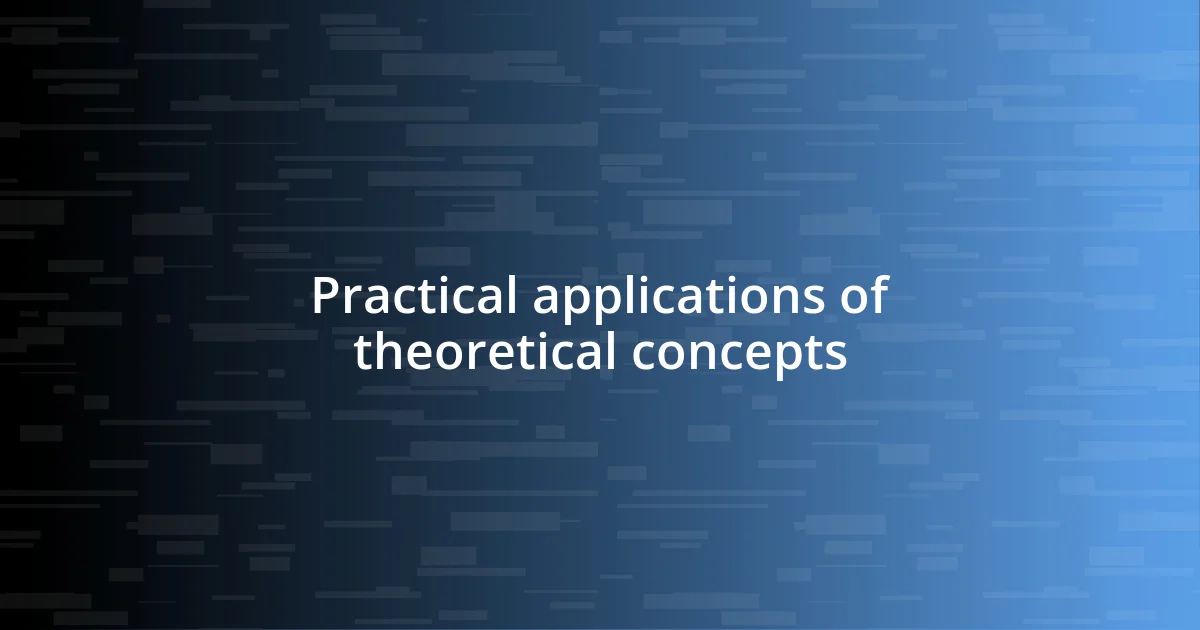
Practical applications of theoretical concepts
When I think about practical applications of theoretical concepts, one experience stands out vividly. I remember during a unit on behaviorism, I decided to implement positive reinforcement strategies in my classroom. Initially, I felt hesitant; it felt too structured, almost mechanical. Yet, when I began recognizing students’ efforts with praise and small rewards, the atmosphere changed. I saw students brightening at the very mention of being acknowledged, and it fueled their motivation. What a revelation it was for me: bringing theory to life can nurture not just learning but also a sense of community and belonging.
To find success in translating theory into practice, I’ve learned to draw inspiration from various strategies that ground my theoretical knowledge in real-world contexts. Here are some practical applications I’ve embraced:
- Incorporating real-world scenarios: Applying theoretical concepts to current events has brought relevance to my teaching, helping students connect the dots.
- Experimenting with imaginative role-play: This approach allows students to embody the theories we’re discussing, making the learning experience memorable.
- Feedback loops: Regularly soliciting input from my students about what works (or doesn’t) helps refine my methods, ensuring that theory serves as a flexible guide rather than a strict rulebook.
- Collaborative projects: By engaging students in group work that resonates with theoretical principles, I’ve witnessed firsthand how shared experiences enrich their understanding.
These practices underscore the beauty of melding theory with practical application—fostering an environment of exploration, growth, and excitement for learning.
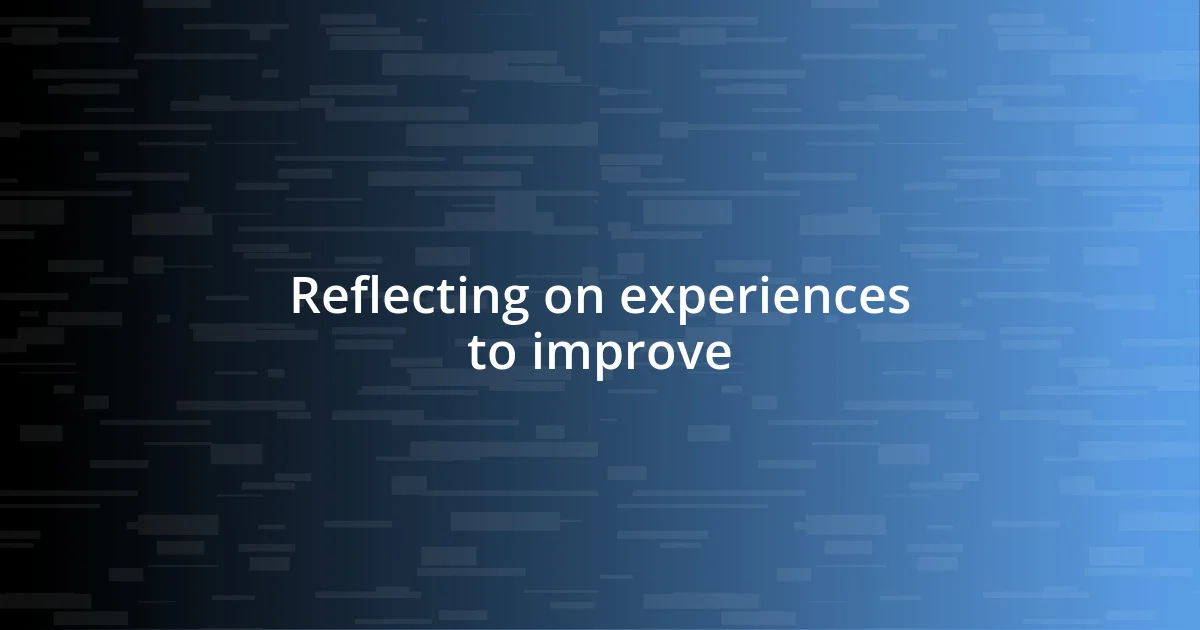
Reflecting on experiences to improve
Reflecting on my experiences has profoundly shaped my approach to teaching. There was a particular moment during a science project where I asked my students to design their own experiments. As they dove into the process, I realized how much I had underestimated the value of their input. Their enthusiasm was infectious, prompting me to reconsider my methods. Have you ever found yourself surprised by how much you can learn from your students?
One lesson I took away from that experience is the power of continuous reflection. After the project, I sat down to analyze what worked and what didn’t. I found myself jotting down notes about the engagement levels and areas where I could provide more guidance. This practice helps me adapt not just my lesson plans but also my mindset, encouraging me to stay open to new ideas and perspectives.
I often ask myself, “What can I do differently next time?” This question fuels my growth. By embracing the lessons learned from past experiences, I’m able to cultivate a richer, more inclusive learning environment. Reflecting on our experiences isn’t just about identifying mistakes; it’s about celebrating successes and recognizing opportunities for improvement. How do you integrate reflection into your teaching or learning process?
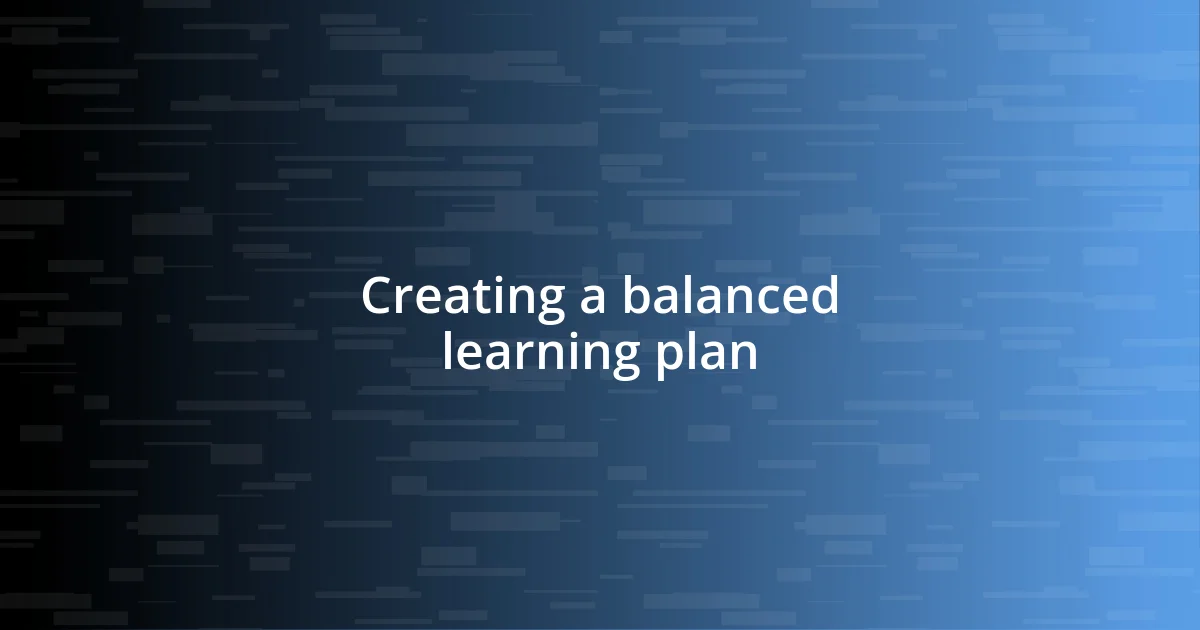
Creating a balanced learning plan
Creating a balanced learning plan requires an intentional blend of theoretical and practical elements. For me, it’s about mapping out a curriculum that doesn’t just focus on abstract concepts but also emphasizes hands-on experiences. I once structured a unit on environmental science where students not only learned about ecosystems but also participated in a local cleanup project. Seeing their faces light up when they realized their actions made a visible difference was priceless. Isn’t that what we’re all aiming for—real, impactful learning?
I also believe in the power of adaptability. As I develop my learning plans, I frequently check in with my students to understand their interests and comfort levels. During one lesson, I introduced a complex theory in mathematics but quickly shifted my approach when I noticed puzzled expressions in the room. I switched gears and brought in visual aids and interactive tools that made the concept more digestible. Learning isn’t one-size-fits-all, and flexibility can unlock those “aha” moments that stick with students for life. Have you experienced similar shifts in your teaching?
Lastly, a crucial aspect of my balanced learning plan involves creating opportunities for self-directed exploration. I often pose open-ended questions, inviting students to pursue their inquiries. Recently, I encouraged a small group to research renewable energy sources. Their passion transformed the classroom atmosphere. They not only shared findings but sparked discussions that connected theoretical knowledge with real-world applications. Watching them dive into research reminded me of my own curiosity as a student. How often do we give learners that autonomy to explore what ignites their interest? It’s a game-changer.












